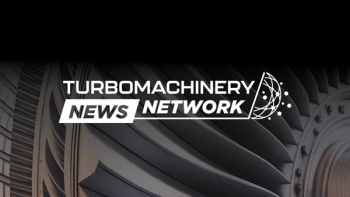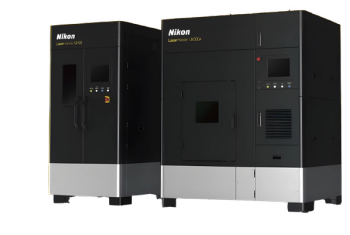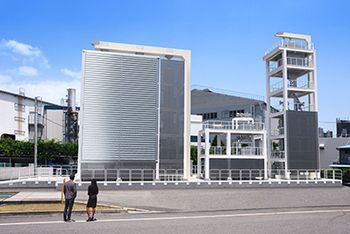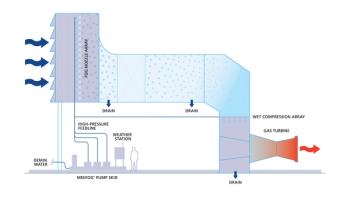
OEM Panel Showcases Advanced Gas Turbine Technologies, AI, and Decarbonization
Panelists at Turbo Expo 2025 highlight how gas turbine manufacturers are not just adapting to change but are actively driving innovation in decarbonization, efficiency, and grid support.
On Wednesday, June 18, at Turbo Expo 2025, OEMs from GE Vernova, Ansaldo Energia, Solar Turbines, and Mitsubishi Power participated in the panel discussion: OEM Pathways Forward: Advancing Gas Turbine Innovation, chaired by Christer Björkqvist, Managing Director and Co-Founder of ETN Global and Benjamin Emerson, Principal Research Engineer at Georgia Institute of Technology.
OEMs discussed how they are responding to the evolving needs of the user community, focusing on recent technical developments and future priorities, including:
- Supply chain resilience: efforts to overcome supply chain challenges to ensure timely delivery and long-term reliability.
- AI and data center demands: adapting turbomachinery and energy systems to support the growing energy needs and reliability expectations of data centers and AI infrastructure.
- Shifts in priorities and political influences: The impact of global policy shifts and market dynamics on OEM roadmaps and their ability to support users through the energy transition (product development, service offerings, and collaboration models)
The panelists included: Ralf Jakoby, Program Manager at Ansaldo Energia; John Mason, Director of Technology and Product Development Engineering at Solar Turbines; Dr. Ghenadie Bulat, Head of New Technologies in Gas Services Division of Siemens Energy; Dr. Yoshifumi Tsuji, Manager of Gas Turbine Integration Team at Mitsubishi Power; and Dr. Jeffrey Goldmeer, Senior Director of Technology Strategy & H2 Value Chain at GE Vernova.
Björkqvist set the stage by emphasizing the importance of understanding user needs and market demands. He highlighted the energy trilemma, stating: "We should balance affordable energy, reliable energy, and sustainable energy,” and outlined decarbonization pathways, including energy efficiency, alternative fuels, and carbon-capture solutions.
“Security supply is key,” he said. “We were reminded of that—and hopefully, policy has been reminded about that—with the blackouts that they recently had in Spain and Portugal. [Security supply] is very important, but decarbonization is also very important for the user community, and having that readiness for decarbonization, affordability, and access. It doesn't matter if you have a great innovation; if it's not affordable for the user community, it doesn’t make sense.”
Ansaldo Energia
Jakoby gave an overview of Ansaldo Energia’s product portfolio and hydrogen capabilities. He used Germany as an example to demonstrate that the split of electricity sources has changed dramatically in the past 10 years. “The amount of renewable energy has increased a lot, and the amount of base load energy is about 50% of what it was 10 years before—this is quite a challenge for gas turbine operators and manufacturers,” he said.
In terms of decarbonization and the introduction of carbon-neutral fuel. Ansaldo’s gas turbine 36 can burn 70% volume of hydrogen, which has been demonstrated in a rig under full conditions (pressure, temperature, etc.).
“[In the rig], we can also simulate the boundary conditions, compressor inlet, and turbine compressor outlet and turbine inlet conditions,” Jakoby said. “Of course, it has extensive instrumentation, and we have a mixing station which can provide any mixture between pure natural gas and 100%, too.”
Its other units can burn between 40 – 45% hydrogen.
Solar Turbines
Mason gave a broader industry perspective, emphasizing the rapidly changing energy landscape and the critical challenges facing the industry. "Things are changing very, very quickly, even inside the design cycle of gas turbines,” he said.
He identified a few macro trends from the past 12 – 18 months as the share of intermittent renewables has begun to increase in the energy supply chain: grid stability/resiliency, decarbonization, and “energy affordability and availability is starting to climb up the ladder of prioritization.” He linked affordability and availability to the supply chain.
“We share common suppliers with our commercial aviation gas turbine companies, our military aviation, and the industrials, and this is creating challenges for availability as lead times become longer, and even affordability as prices are going up,” Mason said.
He pointed out that the challenge of grid resiliency is well understood. “You add to that the emergence of AI data centers and grid inability—that word was chosen correctly because, quite frankly, grids are not able to meet the rapid demand for power that data centers need, so this is creating a challenge commonly referred to as the Power Challenge,” he said. “Interestingly, data center growth is not paced by technology; it's paced by the availability of electricity.”
Data centers have complex computational needs and therefore have dynamic load requirements. They create load fluctuations that require innovative power solutions. Thus, gas turbine manufacturers must adapt to increasingly dynamic load demands, Mason said.
Siemens Energy
Bula gave attendees a holistic approach to cleaner power generation. He said Siemens Energy is a comprehensive energy solutions provider with a comprehensive portfolio.
"We are really in the business of converting green molecules into green electrons,” he said.
Bucha discussed multiple innovative approaches, including partnerships for hydrogen technology, carbon-capture solutions, and advanced digital technologies. He highlighted several important demonstrations, including:
- The world's first 10-MW carbon-free grid power from a 100% hydrogen gas turbine.
- A successful test of 100% methanol combustion with its partners at the Net Zero Technology Center in Aberdeen.
- Involvement in a feed study for a U.K. carbon-capture project that is expected to reduce nearly 1 million tons of CO2 annually.
Bucha also emphasized digital innovations and AI, the show’s theme, showcasing its capabilities in microgrid management, physics-based emission prediction models, and advanced computational neural networks for predicting component performance.
Siemens Energy has entered some “exciting partnerships,” including a collaboration with
A few key themes were highlighted in each OEM’s presentation:
Hydrogen Integration: Hydrogen as a critical path to decarbonization. This includes hydrogen combustion tests, hydrogen fuel flexibility, and partnerships for 100% hydrogen-capable hardware.
Operational Flexibility: There was an emphasis on the need for gas turbines to rapidly respond to changing grid demands. This includes fast ramping, low-load operations, and supporting renewable energy integration.
Digital Transformation: Advanced digital technologies, including AI and physics-based modeling, were presented as crucial tools for improving efficiency, predicting maintenance, and optimizing operations.
Grid Stability: There are several challenges in integrating intermittent renewable energy sources. A good example is the Iberian Peninsula blackout.
Partnerships and Innovation: Each company stressed the importance of collaborative approaches, whether through research partnerships, digital solutions, or innovative technology development.
The gas turbine industry is rapidly evolving to meet the challenges of decarbonization, grid stability, and changing energy demands. There is an overall commitment to innovation through hydrogen capabilities, digital technologies, and flexible operational strategies.
The future of energy is not about choosing between traditional and renewable sources, but about creating intelligent, flexible systems that can seamlessly integrate multiple energy technologies.
Newsletter
Power your knowledge with the latest in turbine technology, engineering advances, and energy solutions—subscribe to Turbomachinery International today.





